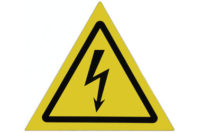What is the first category that comes to mind when you think about the hazards that miners face? Chances are it’s not electrical, yet electrical accidents are the leading cause of mining fatalities, responsible for more than six percent of all mining industry deaths between 2000 and 2009.1
Highest injury rate underground
Mining, in fact, is far more dangerous in terms of electrical hazards than most other industries in the U.S., with a 2000-2009 electrical fatality rate approximately 8 to12 times the rate for all U.S. industries, according to the U.S. Bureau of Labor Statistics (BLS). Coal mining has higher electrical injury rates than noncoal mining and underground operations result in more electrical injuries than surface operations.2 Non-contact electrical burns due to arc flash events comprise the largest single category of electrical injuries.
Electrical injuries in mining are disproportionately deadly. During the same time period cited above, there was one fatality for every 22 electrical-related injuries, compared with an average of one fatality for every 203 injuries for all other injury types in mining.1
Studying the problem
In order to identify the main causes of electrical injuries in mining – and develop ways to address them -- the U.S. National Institute for Occupational Safety and Health (NIOSH) Office of Mine Safety and Health Research (OMSHR) studied data on mining industry electrical injuries reported to the U.S. Mine Safety and Health Administration (MSHA) for the years 2000 to 2009.
The OMSHR took a close look at eight-hundred sixty-five electrical injuries that occurred during that period (39 of them resulting in fatalities). In an article2 on the study, authors GT Homce and JC Cawley noted that 69 percent of the electrical injuries and 69 percent of the fatal electrical injuries occurred during machine maintenance or repair activities. In the majority of these cases (21 of 27), the failure to de-energize, lock-out and tag the circuit was either the cause or a contributing factor.
Who is it that is being injured by electrical hazards in mining operations? Electricians and mechanics were injured in 42 percent of the incidents studied. Also of note: contractor employees had a much greater chance of an electrical injury being fatal than did mine operator employees.
The investigators identified the top three root causes for fatal electrical injuries as:
- No or inadequate lock-out and tagging
- Failure of power system components
- Contact of overhead electrical power lines by mobile equipment.
What is OMSHR doing about the danger?
Through the OMSHR, NIOSH has conducted studies – many of them in the Mine Electrical Laboratory – that have focused on power system design, engineering controls, work organization and procedures, protective equipment, and human factors.
Research findings have included methods for: avoiding electrical cable hazards; improving power system grounding; preventing electrical ignitions which could lead to fires and explosions; improving overhead electrical power line safety and mitigating arc flash hazards.
Going forward, OMSHR plans to continue to address existing electrical hazards as well as those that may arise from new technology, such as shock and burn hazards associated with switching equipment and cables, improved training, battery safety, and equipment permissibility.
And of course, educating workers about hazards plays a key role in keeping them safe. To that end, NIOSH has made available a discussion guide and an arc flash awareness video3 that includes the harrowing tales of workers who experienced – and survived – the perilous electrical events.




